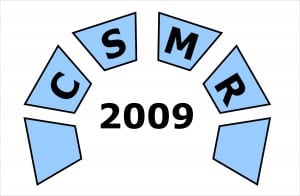When I want to learn about something in free/open source software more generally, there are a number of different types of sources to look towards, each one with their own advantages and considerations, and each with an intended audience. So knowing about all of these types of sources serves as a good indicator of where to start looking. Judging the most suitable place from where to obtain veracious information about FLOSS reminds me a little about the same problem in science.
If you want to learn about the latest from the world of quantum physics, where do you go? A research paper? That is surely guaranteed to bring fresh news from the physics trenches, but it will certainly assume some domain knowledge on the part of the reader and a grasp of some sophisticated mathematics. Failing that, you could wait for someone to write a more understandable treatment of the subject — a magazine article in New Scientist will probably not take long to become available; but alternatively a book will contain more detail if you can wait. The nuances within such an example do not differ wildly from those you might observe with the same question in FLOSS.
So what types of sources exist for FLOSS and how are they useful or problematic? This is my take on the taxonomy.
Research works
Not too long after “open source” was coined as a phrase in 1998, serious research institutes began to look into it, hence we now have a decade’s worth of peer-reviewed research carried out by universities, institutes and other organisations. In addition to the many stand-alone works, there have been a number of research projects devoted to FLOSS that routinely publish their findings, including CALIBRE, SQO-OSS and FLOSSMetrics as examples in Europe alone. Some academic conferences, particularly those dedicated to software engineering, now even explicitly refer to FLOSS as a topic of research. Such publications are the things to look through for the latest information, but they typically assume a rather high level of familiarity with the concepts, and occasionally a good knowledge of maths and programming. They are normally published in conference proceedings and journals, which might cost a pretty penny to access.
Technical reports
Many organisations, typically with some particular expertise within FLOSS, release technically-oriented reports on their research or experiences. They may sometimes be released as part of wider research in which the organisation is involved and the Internet is often utilised as the distributive medium these days. They are very much like research papers, but it is likely they have not have been subjected to a wider peer-review process.
Books
Now the field really widens up. Many many books have been authored over the last ten years on FLOSS, aimed at both specialists and at a more general audience. You can purchase an entire book dedicated to the sed stream editor, or you can read Eric Raymond’s general thesis on the open source movement (which I think is readable by any interested layperson), so the understandability of information within books is much more wide-ranging than that of peer-reviewed research papers. And yet, rather similarly to research works, choosing your sources can depend on reputation (of the publisher as well as the author); but having said that, if you are looking for a book as a place to begin your quest for information, you probably have insufficient first-hand knowledge about reputations. In such a case it would be prudent to check your choice with someone more “in the know”.
Magazine articles
Like books, magazine articles on FLOSS may be intended for the specialist (such as those found in the IEEE publication “Computer“), or the more general audience, which may or may not feature in a software-oriented publication. Once again, it is necessary to be discerning depending upon a combination of the author’s credentials, the depth of information given and the rigour demonstrated (for example, a FLOSS article from the BBC News, regardless of how well written, is unlikely to be of sufficient depth to do anything other than spark an interest in an otherwise unfamiliar topic). But furthermore one must acknowledge the probable brevity of articles appearing in magazines or newspapers. I would suggest an article is a useful way to whet your newly developing appetite, or as a quick way to keep up with the Joneses.
Websites, blogs, etc.
There are numerous and diverse resources on the Internet addressing free software with greatly varying quality and intent, and, for organisations or projects concerned with FLOSS, they may be the primary method of contact and dissemination. Their reliability may be judged upon by the identities of the authors/publishing organisation, or by the opportunity for corroboration. Some websites and blogs are the Internet presence of authors accessible via other media (for example, a number of published FLOSS researchers maintain blogs and websites, such as Diomidis Spinellis, Paul Adams, Martin Krafft, and many more), but in a number of other cases the authors remain anonymous which presents the difficulty of establishing their credentials. Even then this does not necessarily preclude a website being useful for research — Groklaw is one of the most well-known websites devoted mostly to discussing FLOSS legal issues, and whilst its authors are anonymous it provides copies of or references to actual legal proceedings.
Now, not to destroy my taxonomy having just built it, but this is clearly not the only useful way of looking at it. I doubt whether one single class of person uses a single type of source to the exclusion of all others, and the types of sources are certainly not mutually exclusive in terms of their veracity: A well-written blog post by an expert has the potential to be a more veracious source than a book or article that achieves only mediocrity.
In search of the ultimate idiom with which to conclude, I’ll borrow from my British heritage and say “It’s all swings and roundabouts.”
 CSMR 2009 soldiers on.
CSMR 2009 soldiers on.